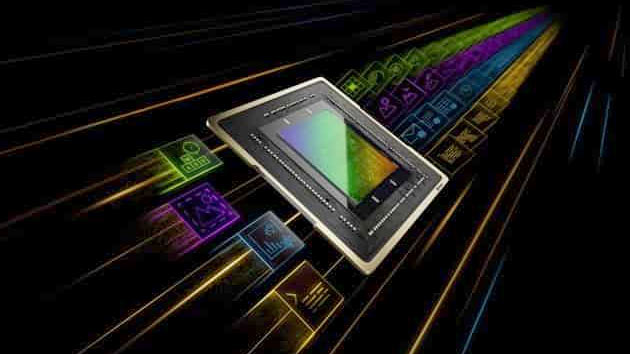Nvidia launches the RTX 500 and 1000 Ada Generation laptop GPUs - allegedly up to 14x better generative AI performance than CPU-only
Lower-end chips for professionals deliver 154 and 193 TOPS, respectively.

Nvidia has launched two new entry-level GPUs for professionals. The new RTX 500 and 1000 Ada Generation laptop GPUs expand the mobile RTX Ada Generation line-up to seven, and these particular models are particularly suited to thin and light designs, according to Nvidia. The potential 154 and 193 TOPS delivered by the RTX 500 and 1000, respectively, is claimed to be enough for content creators, researchers, or engineers on the go. Even the humble RTX 500 delivers “up to 14x the generative AI performance,” compared to CPU-only configurations, according to Nvidia's in-house testing.
With the two new RTX Ada Generation GPUs for laptops, the family expands to seven SKUs. However, Nvidia is also currently maintaining previous-generation Ampere laptop chips with similar naming. Check out the table below for the full range, and the respective product specifications.


Above you can see the specs and a couple of performance metrics for the workstation laptop GPUs. There have been some significant uplifts in performance delivered by the new Ada Generation GPUs, so you wouldn’t want to mix up an Nvidia RTX 500 Ada Generation (154 TOPS) with its Nvidia RTX A500 predecessor (56 TOPS), for example. The GPU names are very similar if you don't know what to look for.
The new RTX 500 and 1000 Ada Generation laptop GPUs share some key similarities. They are both based on Nvidia’s AD107 GPU, for example. Moreover, their CUDA core counts are booth in the 2000s, at 2,048 and 2,560, respectively. Memory subsystems are also quite anaemic with the RTX 500 Ada Generation sporting 4GB of GDDR6 on a 64-bit bus, and the RTX 1000 Ada Generation only raising this to 6GB of GDDR6 on a 96-bit bus. However, such low specs help keep the power budget down, with the lowest-end chip only pulling 35-60W. The RTX 1000 Ada Generation ramps up from 35-140W with up to 15W extra Dynamic Boost. Overall, this hardware clearly targets the stated thin and light workstation segment.
In its press release, Nvidia also sought to remind potentially interested parties that increased TOPS isn’t the be-all and end-all of the new Ada Generation chips. Like the existing members of the product family these two little laptop GPUs also offer the benefits of: third-gen RT cores, fourth-gen Tensor cores, Ada Generation CUDA cores, DLSS3, the eighth-gen NVENC with AV1 support, and beat iGPUs thanks to their dedicated GPU memory.
Portable workstations packing RTX 500 and 1000 Ada Generation laptop GPUs from partners such as Dell, HP, Lenovo, and MSI are expected to become available this spring.
Get Tom's Hardware's best news and in-depth reviews, straight to your inbox.

Mark Tyson is a news editor at Tom's Hardware. He enjoys covering the full breadth of PC tech; from business and semiconductor design to products approaching the edge of reason.
